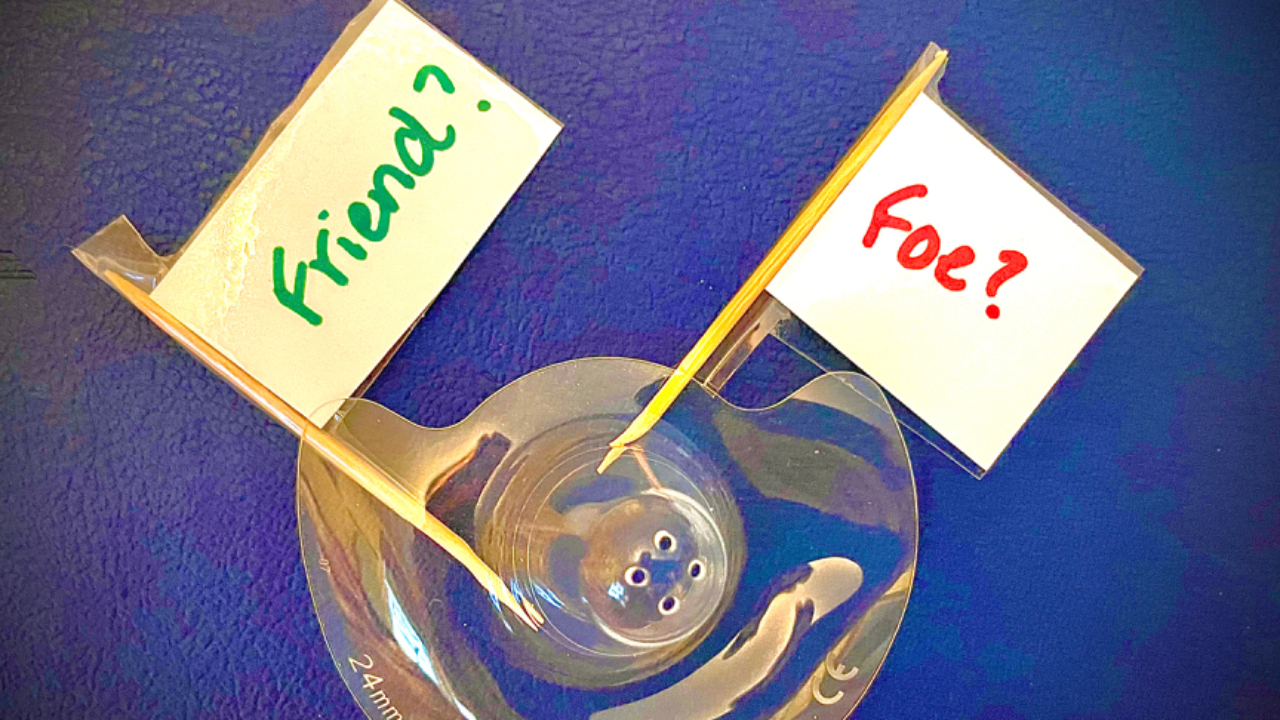Nipple Shield: Friend or Foe?
Mar 19, 2023
A nipple shield (NS) is a thin silicone nipple-shaped device that is placed over a mother’s nipple-areola prior to baby latching on to breastfeed. Documented use of nipple shields dates back to the 16th century. Apparently breastfeeding challenges have been around for a long time, which in and of itself is interesting, isn’t it? Sometimes we tend to think that our modern ways are messing things up, but maybe some physical challenges have always existed.
The most common use for nipple shields today are:
- Protection of sore nipples
- Assisting baby to latch on to the breast
This seems like a reasonable way to deal with these issues, right? So, why is there so much controversy over the use of nipple shields?
Pros and Cons
Here are some of the pros and cons that are commonly debated:
|
PROS |
CONS |
|
Decreases nipple pain |
Doesn’t correct cause of nipple pain |
|
Helps baby to latch |
Baby doesn’t learn to latch |
|
Helps baby to get more milk |
Baby gets less milk & thus lowers milk supply |
|
Helps baby return to breast |
Gets baby “hooked” on shield |
When you read these pros and cons, what is your gut reaction? Do you lean towards the pros or do you lean towards the cons? Or are you like me, and say “YES!” to all of them? Therein lies the dilemma. Thus, the answer to the title question, “Friend or Foe?” is probably: both.
7 Things Research Tells Us
1) Mothers find nipple shields are helpful.
- A survey of mothers using a nipple shield found that 86% of them reported that the nipple shield helped them to continue breastfeeding.[1]
2) Most lactation care providers use them at some point.
- A survey of over 400 professionals specializing in breastfeeding management reported that 92% used nipple shields in their practice.[2]
3) Nipple shields do not affect infant weight gain.
- Infant weight gain is similar in maternal-infant dyads using nipple shields for two months compared to those not using the shields. [3]
4) Nipple shields do not affect breast milk intake or hormone levels.
- Based on a study of breastfeeding women, which took blood samples immediately before, 10 and 20 minutes after breastfeeding started, maternal hormone levels were not significantly different for breastfeeding sessions with and without nipple shields, and there were no significant differences in breast milk intake.[4]
5) Most babies eventually wean off shield.
- In a survey of over 200 women who began nipple shield use between the 1st and 42nd day of infant’s life, the median duration of use was 2 weeks.[5]
6) Nipple shield use can be helpful for premature infants.
- A study of 34 premature NICU infants found that when using a nipple shield, all infants consumed more milk than without the shield.[6]
7) Nipple shields may not reduce nipple pain.
- In a group of women who used a nipple shield for nipple pain, pain scores were similar with and without the use of the shield.[7]
Even with the substantial research around nipple shields, there are still questions and controversies and more research in this area would help us all. I think I can safely say however, that nobody who works with breastfeeding families is in favor of indiscriminate use of nipple shields. I believe we all use them with a sense of caution and with a strong recommendation for follow-up.
Like any of the tools in our “tool-belt,” we choose the tool that seems to fit best at the time. What an IBCLC evaluates on day-two post-partum may be quite different than what a follow-up IBCLC sees on week-two. As an IBCLC who works in the inpatient setting, I know that using a nipple shield is sometimes the choice between a mother continuing or abandoning breastfeeding. As an IBCLC who also works with outpatients, I understand the frustration and inconvenience mothers sometimes feel when they are dependent on the shield. As the saying goes, “there are two sides to every coin,” and the nipple shield is no different. With any of our recommendations, our goal is to support the continuation of breastfeeding for mothers who choose to do so, and based on the evidence, I believe we can feel confident in recommending a nipple shield when clinically indicated.
References
[1] Brigham M. Mothers’ reports of the outcome of nipple shield use. J Hum Lact. 1996;12(4):291-297.
[2] Eglash A, Ziemer, AL, McKechnie AC, et al. Professionals’ attitudes and use of nipple shields for breastfeeding women. Breastfeed Med. 2010; 5(4):147-151.
[3] Chertok IR. Reexamination of ultra-thin nipple shield use, infant growth and maternal satisfaction. J. Clin. Nurs. 2009;18(21): 2949-2955.
[4] Chertok IR, Schneider J, Blackburn S. A pilot study of maternal and term infant outcomes associated with ultrathin nipple shield use. J Obstet Gynecol Neonatal Nurs. 2006; 35(2):265-72.
[5] Powers D, Tapia VB. Women’s experiences using a nipple shield. J Hum Lact. 2004; 20(3):327-34.
[6] Meier PP, Brown LP, Hurse NM, et al. Nipple shields for preterm infants: effect of milk transfer and duration of breastfeeding. J Hum Lact. 2000; 16(2):106-14.
[7] Coentro VS, Perrella SL, Tat Lai C, et al. Impact of nipple shield use on milk transfer and maternal nipple pain. Breastfeed Med. 2021:16(3):222-229.
Subscribe to our Blog
Join our mailing list to receive the latest blog posts, courses and updates from our team.
We hate SPAM. We will never sell your information, for any reason.

